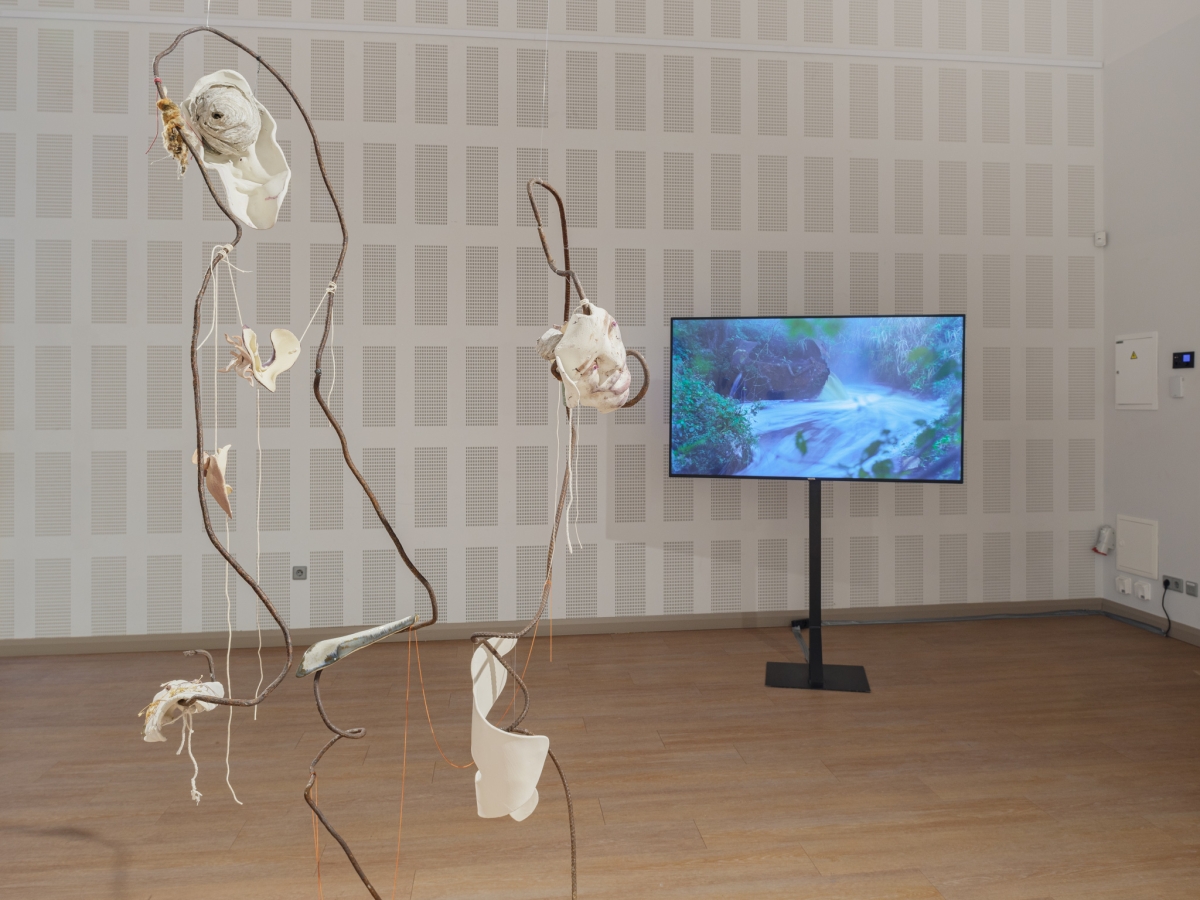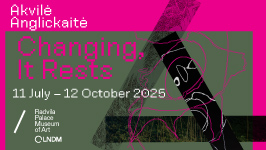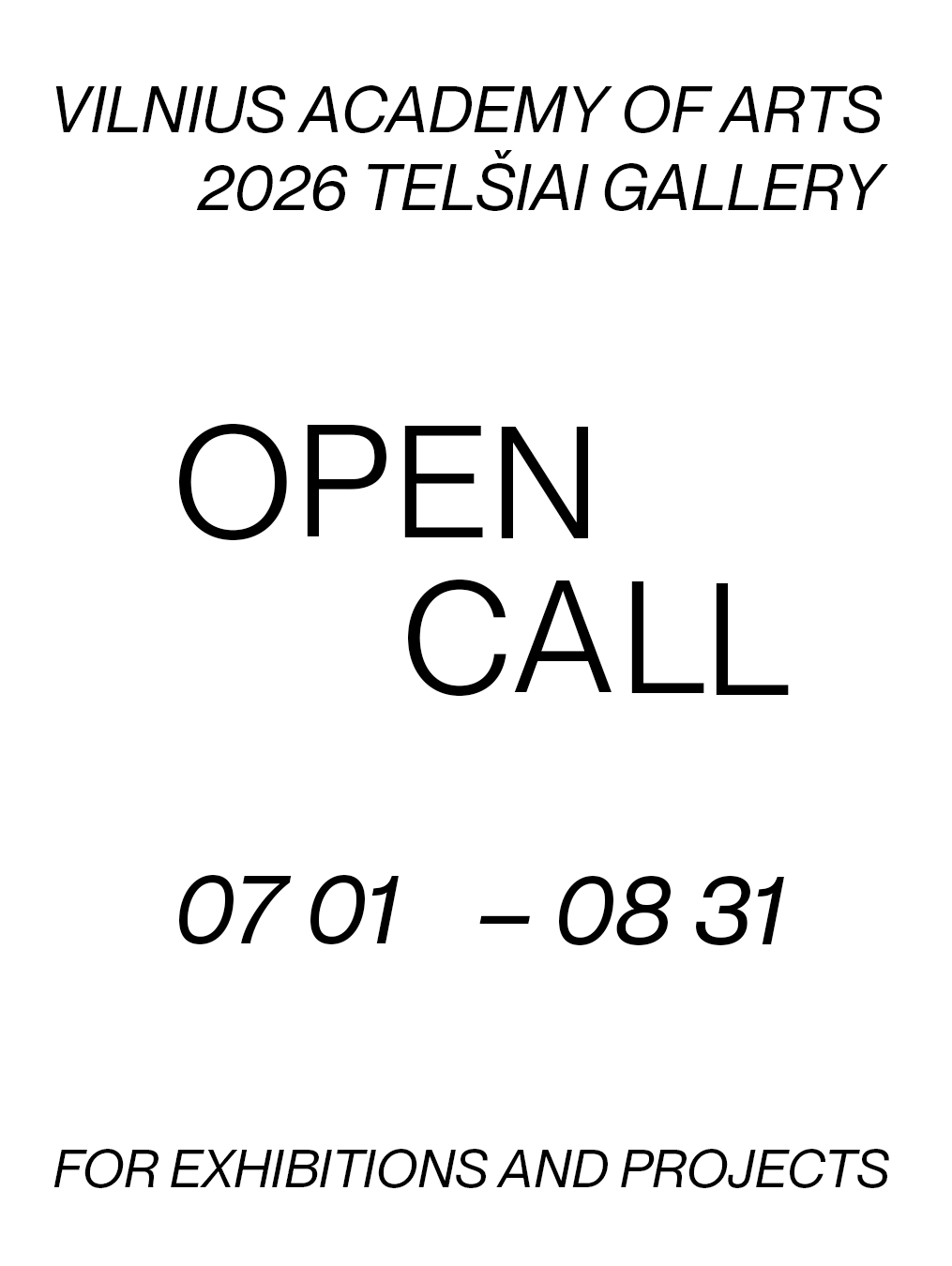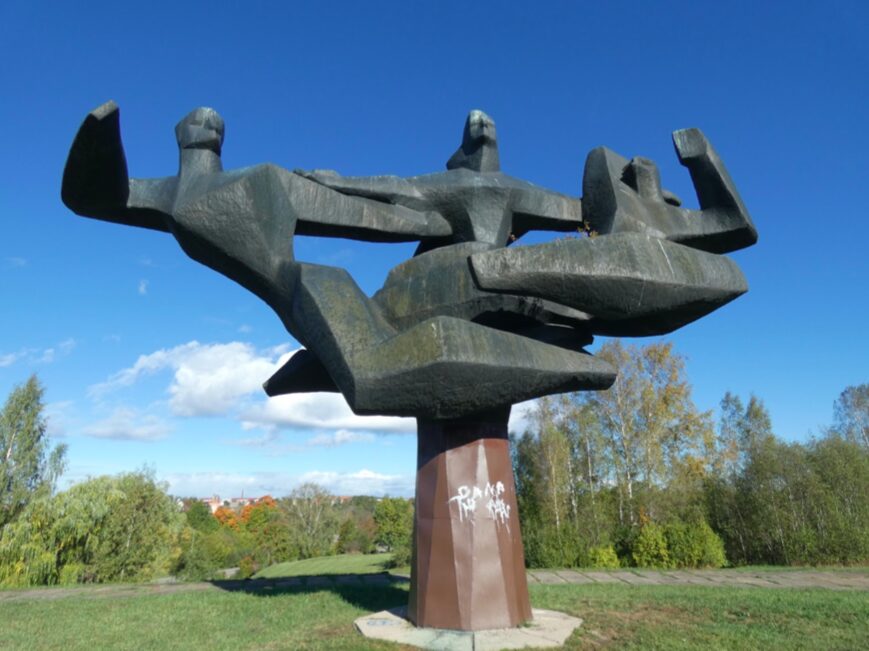The year 2024 is the ninth year the Riga Photography Biennial (RPB) has taken place, or more precisely, it is the fifth official biennial, whereas the other four years have featured off-year programmes. Therefore, one could assume that local audiences have just about grown accustomed to something related to photography happening from middle or late spring until approximately the middle of summer, and sometimes longer. Moreover, this year it seems that the RPB is the only event to scratch this itch, due to an unfortunate lack of financial support for Riga Photomonth, another festival that normally happens around the same time, thus not only encouraging healthy competition and prompting expected comparisons, but also making Riga appear like a true cultural hub for photography. Well, at least for a moment, before Latvian photography retreats to the rather quiet and lowly life it is accustomed to for the rest of the year, being of interest to a couple of art institutions and a few enthusiasts, but otherwise underrepresented in research, and with a museum caught in the recent misfortunes of relocation and left without a director.

View from the Riga Photography Biennial 2024 exhibition ‘Human Computer’. Photo by Ingus Bajārs

View from the Riga Photography Biennial 2024 exhibition ‘Human Computer’. Photo by Ingus Bajārs
Be that as it may, this remark is not necessarily a critique of the festival or the biennial format, but rather the conditions in which they take place, and to give credit where it is due, some relevant issues and blank spaces in our knowledge of photography are implicitly acknowledged in this year’s RPB, mainly with one of its focuses being on the history of photography. And theoretical framing is precisely what interests me most in this year’s biennial, and what I devote this article to. Namely, as the bio[1] of RPB 2024 states, this year’s central topic is identity: the programme focuses on ‘a range of existential questions, including the impact of technology on human nature, the relationship between man and nature, as well as the informative code of the contemporary image’. Yet, as I will try to show, I do not think this is the best keyword for the event, although that does not mean the RPB is not interesting or successful in other ways.
In a sense, what could be seen this year fits into the scheme of what the RPB usually tackles: it is an event dedicated to the analysis of visual culture and image culture, with a strong focus on technology and how it influences everyday social and political practices, and various understandings of different facets of reality. There is also a self-reflective aspect to the biennial, with photography itself being a topic of interest, broadly conceptualised[2] as ‘an all-embracing concept encompassing a mixed range of artistic image-making practices that have continued to transform the lexicon of contemporary art in the 21st century’. This is manifested not only in the content, but also in the form: most works are not photography in the traditional sense, but rather videos, new media art, objects and artefacts.
There is no denying that the topic of identity fits in with this context, for the concept can be interpreted in at least two ways, both as that which makes a thing what it is, and what connects and unites it with other similar, or in fact identical, things. Moreover, if one asks whose identity the RPB thematises, I propose two referents: the identity of people, both in a natural and a social sense, and the identity of photography itself. For example, the central exhibition ‘Human Computer’ engages very directly with the question of what it means to be human in the contemporary technological age, whereas Renāte Feizaka’s and Klāvs Liepiņš’ ‘Potato People’ aims to thematise what Latvianness is in a globalised world. In contrast, ‘Contemporary Histories of Photography I and II’ explore the historiography of the medium, so in other words, the narrative of the identity of photography, and this is complemented by ‘The Apparent – Un/believable’, which calls into question the relationship between reality and the seeming objectivity of photographic representation,[3] and ‘A Breaking Point, A Delicate Balancing Act’, which aims ‘to examine photography and explore its present-state melancholy’[4] in the age of artificial intelligence. Although the topics are obviously more nuanced than I let on, I think it is safe to say that they boil down to an interest in evaluating what constitutes humanity and photography.

View from the Riga Photography Biennial 2024 exhibition ‘Contemporary Histories of Photography I’. Agate Tūna, ‘Who Has Come Here?’, 2024. ISSP Gallery. Photo by Sasha Komarova

View from the Riga Photography Biennial 2024 exhibition ‘Contemporary Histories of Photography I’. Kristīne Krauze-Slucka, ‘Enthusiasm in Times of Extreme Scarcity. Ina Stūre’, 2024. ISSP Gallery. Photo by Kristīne Krauze-Slucka
On a more personal note, I believe that the second type of identity, that of photography, is explored more skilfully in the biennial. Indeed, my personal highlights of the event were the aforementioned exhibitions ‘Contemporary Histories of Photography’ and ‘A Breaking Point, A Delicate Balancing Act’, held in the ISSP and RIXC galleries respectively. ‘Contemporary Histories’ starts off with the honest observation that the history of photography in Latvia is somewhat uncharted territory, but, importantly, this also opens up opportunities: it is possible to write and pioneer a new history of photography, sidestepping the pitfalls, biases and missing aspects of traditional history writing, and acknowledging the subjectivity of the process. The exhibition is also the precursor to a forthcoming and very valuable publication, A Visual History of Photography in Latvia. One could speculate how much this is an achievement of the RPB, or whether the project just coincided with the biennial and tactically decided to ally itself with it and be subsumed in the programme, but it is a valuable occasion deserving publicity nevertheless. ‘A Breaking Point, A Delicate Balancing Act’, however, was a strong reflection on the nature of photography, without displaying any actual photographs: the exhibition consisted of unique cyanotypes (Albert Grøndahl), a site-specific installation (Ieva Rojūtė) and AI-generated images (Benjamin Freedman), which, I suppose, could be roughly translated into three main topical pillars of materiality, language and variation, all certainly important to photography. This was also quite possibly the first time I had such an aesthetic response to AI-generated images: Freedman strove to and succeeded in invoking feelings of nostalgia, déjà vu, and imaginable memories, although I have my reservations about comparisons between such constructed ‘memories’ and how memory truly functions. The age of AI has given us a new metaphor for describing human processes, replacing the paradigm of comparisons with, for example, the computer program, but surely not everything can be explained in these terms.

View from the Riga Photography Biennial 2024 exhibition ‘A Breaking Point, A Delicate Balancing Act’, RIXC Gallery. Photo: Ingus Bajārs

View from the Riga Photography Biennial 2024 exhibition ‘A Breaking Point, A Delicate Balancing Act’, RIXC Gallery. Photo: Ingus Bajārs

View from the Riga Photography Biennial 2024 exhibition ‘A Breaking Point, A Delicate Balancing Act’. Benjamin Freedman, ‘Mountain Sunrise’ and ‘Mountain Sunset’, 2023. RIXC Gallery. Photo: Ingus Bajārs
Yet I cannot help thinking that there is a more fundamental issue behind these speculations. Now that it is clear how the programme can be understood through the lens of the main topic of identity, it is worth noting that it is a topic almost too synonymous with the RPB’s general thematic focus, open to simple interpretation. For it is hard to name something that could not be interpreted by invoking the concept of identity: it is a term that encompasses cause and effect, past, present and future, ideals and reality, thus being too general and not really adding anything to the individual exhibitions that constitute the biennial.
I do not suppose it is such a bad predicament though: the project would not lose much if the concept of identity was simply withdrawn from the central position. But there is also another path that could be taken to interpret this year’s RPB. The three essays included in the official publication emphasise perfectly three different talking points of the biennial: posthumanism, and a twofold focus on the history of photography, a productive and a self-reflective one. Starting from the latter, history is of interest to the RPB, both philosophically, as confirmed by the already-described questioning of the nature of photography, and in a sense true to the discipline, as is confirmed by Irēna Bužinska’s research and exhibitions at the National Library of Latvia on photomontage in Latvia during the interwar period, and on photographs in Latvian children’s books, narrow and precise topics that add to the collage of knowledge. Yet the case for posthumanism is different.
There are undoubtedly exhibitions that allude to posthuman ideas. The central exhibition features an explicit reference to the thought of Donna Harraway, and I would argue that Nastja Säde Rönkkö’s poetic video-installation ‘salt in our blood, in our sweat, in our tears’, for example, also invites associations with Astrīda Neimanis’ hydrofeminism. Yet if we follow the line of thought identified in Daniel Rubinstein’s essay ‘Posthuman Photography’ republished in the catalogue, can we be sure that the way photography figures in the RPB is not ‘reduced to the view of the human eye’[5] and goes beyond dichotomies? Although I admit that the essay probably does not hold authoritative weight on the concept of the biennial, it is an interesting question to ask. And the answer points to the fact that there is actually quite a bit of humanistic content. I agree with Daniela Zālīte’s observation[6] that the way the question of identity is posed in the central exhibition is actually rather anthropocentric, and the human remains at the forefront of the works. Even if we look at a different example, the exhibition ‘Potato People’, it also fails to offer a satisfactory answer to how we should conceptualise the (post)human condition. The form of the artworks, videos played on screens, points towards intermingling with technology, but the content almost reads like a longing for a simpler, pre-modern world, stereotyped identity practices, merging with nature, as if the authentic human experience is a thing of the past. Perhaps the exhibition ‘To Be We Need to Know the River’ is closer to the intended message, yet even here one could ask what human solidarity with nature might look like, and whether this does not require humans to take the position of guardians, thus still placing ourselves at the top. Is nature truly so defenceless, and is this the kind of protection it requires?

View from the Riga Photography Biennial 2024 exhibition ‘To Be We Need to Know the River’. Kotryna Ūla Kiliulytė, view from the installation ‘Arctic Swell’ (2023). Cultural Centre Siguldas Devons. Photo by Ingus Bajārs

View from the Riga Photography Biennial 2024 exhibition ‘To Be We Need to Know the River’. Kotryna Ūla Kiliulytė, view from the installation ‘Arctic Swell’ (2023). Cultural Centre Siguldas Devons. Photo by Ingus Bajārs
In summary, I think the 2024 Riga Photography Biennial is best understood as an assemblage of multiple topical focuses that coincides with what the project normally strives to say, although I would not go so far as to call it identical. This year’s RPB has added to the bundle of reflections on the medium of photography, image culture, and contemporary existence, but its most notable contribution might be support for the colouring of multiple blank spots in the history of Latvian photography. In this respect, I look forward to the forthcoming Visual History of Photography in Latvia, and encourage others to do the same and stop by the ISSP for ‘Contemporary Histories of Photography II’, the final event in the biennial programme, open until mid-August. Other than that, it seems that this was a year when the Riga Photography Biennial merely strengthened its own identity. What’s next?
[1] https://www.rpbiennial.com/aboutus.html
[2] https://www.rpbiennial.com/aboutus.html
[3] The Riga Photography Biennial 2024 Publication, p. 98-101.
[4] The Riga Photography Biennial 2024 Publication, p. 81-83.
[5] Rubinstein D., Posthuman Photography // The Riga Photography Biennial 2024 Publication, p. 25.





























